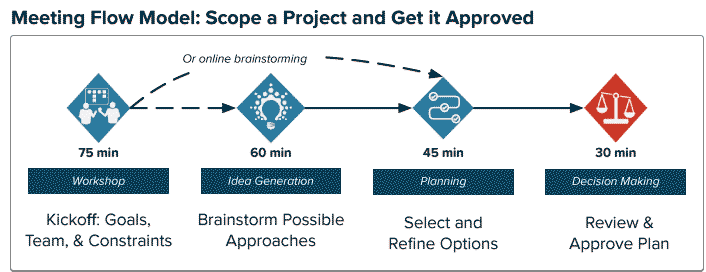What You Need to Know About Board Meetings
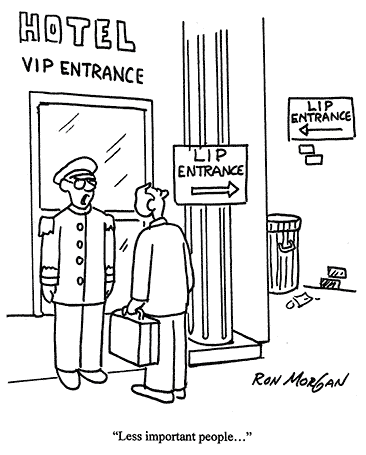
As a young professional, I found The Board intimidating. It really didn’t matter what The Board was a board of – it was always clear that The Board included many Very Important People who made big important decisions.
I think a lot of people feel this way about The Board, and it creates some unique challenges to board work. Boards already operate with more requirements and constraints than other groups, which reinforces this idea that every board must operate as The Board should.
Boards are responsible. They provide fiduciary oversight, influence strategy, oversee management, and guard against undue risks or compliance violations. They may direct programs, lead fundraising, and champion the organization. In the smallest organizations, the board is the organization. These are big responsibilities and important tasks to get right, requiring the careful attention of well-informed, intelligent and conscientious board members.
You know, Very Important People.
Who’s really on the board?
My alma mater just reminded me that I’m now nearly 20 years into my career. (Thanks for making me feel old, LC! No donations for you!) Over that time, I’ve served on and worked with many kinds of boards, and seen lots of board members in action.
I know now that my early impressions were both entirely correct, and also dead wrong.
I know The Board is actually made up of Important People. These people are important because the work they do is important. And the best board members really are intelligent, thoughtful, energetic, conscientious, pragmatic and involved. So in that sense, I was right. Very Important, Impressive People!
But more critically, whether in the boardroom or not, every board member is also very much just another person. These folks may or may not be “important” in any special way that you’d recognize outside the board meeting. They may not be particularly intelligent or thoughtful or energetic or pragmatic. Board members can be self-serving, petty, and negligent. They might be shy, anxious, and intimidated. And even with best intentions, they can be wrong.
Basically, they’re people. Even the superstars.
My “A-Ha moment” about board members as people
I once attended a board committee meeting full of honest-to-goodness Very Important People. High level directors from Microsoft, the FDA, major professional organizations, judges, and one particularly impressive gentleman who helped develop nuclear submarines for the US Department of Defense. At the time, I was (in my eyes) a trumped-up web designer who could barely walk straight in my business heels. It was all very intimidating.
At the first meeting break, the very scary US Defense representative approached me. I began to sweat – surely he wondered how I’d even got into the room, and I was about to be grilled!
Instead, he offered to split the last oatmeal raisin cookie with me. Turns out we both were trying to watch our weight, but also really needed a sugar boost after the deadly boring presentation we’d all just suffered.
As the meeting went on, it became clear that each one of these Very Important People were all – well – people. One important person whined a lot. Super annoying. One kept getting confused about what we were discussing. An important person attending by phone fell asleep before muting themselves, and snored loudly throughout the next hour (delightfully, the session was recorded! 🙂 The chairwoman was professional, calm, reasonable, and clearly irritated more than once. By the end of the meeting, critical issues had come to light and important decisions were made, then everyone rushed out for badly needed drinks.

This meeting was enlightening for me – one of the moments that helped inspire the work we do at Lucid today. From this meeting and many that have followed, our team learned some important lessons about how to approach board meetings.
Insights about board meetings
1. The biggest constraints aren’t what you think
When I showed up at that meeting, I wasn’t entirely sure what I could and could not do. Was I allowed to comment on the discussion as a newbie? I didn’t have full voting rights, and didn’t have an agenda item to present. I was mostly there to learn. Did I have to sit somewhere special?
The first time someone has to create the agenda for a board meeting can be even more nerve-wracking. Many of us know that there are rules about when and how the board meets, but we’re not quite sure what those rules might be.
Figuring out the rules turns out to be pretty easy
The confusion about the rules governing board meetings is understandable, because in reality, the rules are different depending on the kind of board. By “kind of board”, I mean whether it’s a board for a non-profit organization, a government agency, a partnership, a corporation, and so on.
Happily, it’s usually pretty easy to find out which ones apply to you. First, you should take a look at your organization’s bylaws or articles of incorporation. Often you’ll find everything you need in there to cover your legal bases. Things like how far in advance you need to send out the meeting notice, how many board members have to show up for the meeting to count, and so on.
Sometimes, though, you won’t find anything in your organization’s documents about the board. This probably means your organization isn’t too formal, but you should look next at the rules governing your kind of board in your state or jurisdiction.
In my experience, those boards with lots of rules and legal constraints are very aware of those rules. The chances that a) you’re in charge of a board meeting where there are lots of strict rules about how you need to set up the agenda and b) no one told you exactly what to do – are infinitesimal to none.
So yes, there are always at least a few things you do need to take care of, and these are generally pretty easy to figure out once you know where to look. Even then, most rules concerning boards have very little impact on the board meeting agenda.
The more challenging constraint: you can’t pick who to invite.
While board meetings are special, they’re still meetings. When you strip away the formal language about motions and quorum and whatnot, what you have is a group of people working together to unblock issues, get to the root of big questions, and make decisions that move the organization forward. In essence, you have the kind of thing going on that you get in most meetings, and all the same opportunities for dysfunction.
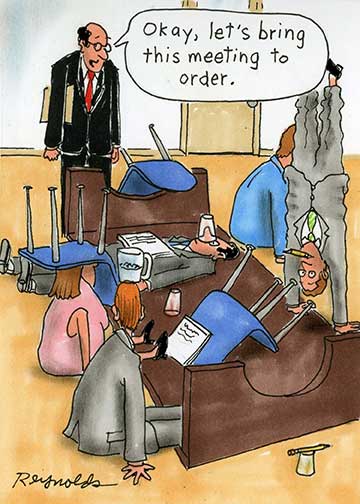
People who are good at running meetings in the business world work hard to focus the agenda down to only the critical topics, and only invite those people critical to the discussion at hand.
You can’t do that with a board meeting. Every board member is invited every time, whether you think they have anything relevant to add or not. And to make it even more challenging, many decisions require most or all of these board members to agree. For the meeting to succeed, figuring out how to design and facilitate the discussion to get that agreement is way harder than figuring out any legal wording requirements.
2. Personality plays larger in the boardroom.
I mentioned the whiner in my “A-Ha moment” meeting. In the half-day we spent together, I got a really good sense of that personality. There was an issue under discussion and he really cared about it. As his stress level rose, and his need to have his point heard and accepted became more acute, all this unpleasant wheedling and shaming and strident demanding came pouring out. His requests that seemed reasonable in writing before the meeting now felt petty.
Board meetings bring together people who may not know each other well (or at all) in a situation where they are expected to behave impressively. When I was younger, this was intimidating for me – I rarely spoke up during the meeting. I watched as some others, also clearly uncomfortable, overcompensated by working hard to say something declarative during every exchange. I doubt any of us left a good impression with the seasoned board members.
When under stress, most people revert to their backup stress behavior. Usually this isn’t their most charming self. In a board meeting where people often have to make stressful decisions, and where constructive conflict is required for an effective result, these backup personalities can start to take center stage. I really doubt the whiner achieved his level of professional success by annoying his way up the ladder, but that board meeting created a situation that made this dark side of his personality gratingly obvious.
3. Responsibility creates risk-aversion, sometimes for the wrong reasons.
In an interview with McKinsey, Oliver Sibony observed that “the further up the hierarchy you go, the harder it becomes to say, “My judgment is fallible.””
The board is ultimately responsible for the consequences of their decisions, but individual board members may not always understand the ramifications of the decision they face. Yet we expect and value boards full of confident decision makers, encouraging board members to sometimes act with a confidence they don’t actually feel. As a result, the board may make what they feel to be the “safest” decision available.
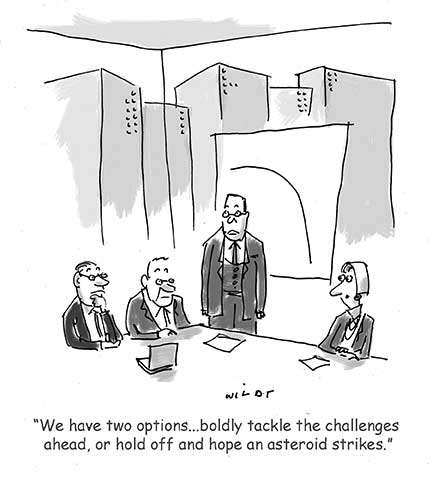
When I served on my son’s PTA board, the “safest” decision was usually the one that made the angriest person in the room happy. Like many non-profit boards, the PTA was full of well-intentioned volunteers just trying to help out. Without better information about the legal and practical implications of a request, the board deferred to whatever made the scary parents chill out.
On the corporate side, we once worked with a board chairman who liked to say “Sometimes the best decision is no decision” whenever confronted with a complicated or controversial subject. When the board lacks the information with which to make a good decision, this could be the case. Usually, though, issues brought to the board for decision NEED to be resolved, as all other avenues short of board intervention have been exhausted. Eventually, we had to stop working with this group as the board became stalemated and ineffective, and the company stagnated.
If they’re not careful, boards are prone to lots of decisions that are “safer” and easier, but not better.
4. Boring is boring.
Board members are in a tricky position. They must make important decisions that have big impact on what the organizations they serve will do – but paying attention to those organizations usually isn’t their full-time job. They don’t know the day-to-day details. They don’t have all that nuanced understanding that comes from living with a problem.
The people bringing information to the board know this, and may try to compensate by preparing super detailed presentations and exhaustive reports to get the board members up to speed.
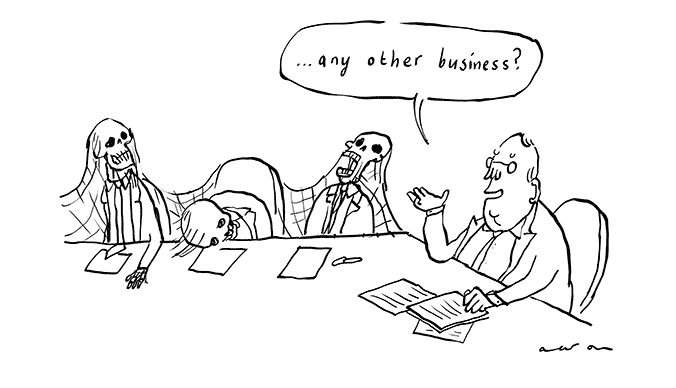
Too often, this results in that poor guy who called in and snored through the call. Which then results in everyone else on the board giggling quietly through your presentation, because while we’re all sure this must be critical data, um, he’s snoring really loud!
(Tee-hee, snigger, chuckle… Um, yes Alan. Very well put.)
5. If it’s too easy, be afraid.
Sometimes you start to prep for a board meeting and it feels like a chore. There aren’t big decisions coming up, you don’t expect any particular controversy, and you’re mostly planning a board meeting because legally, you have to. You fully expect to go through the motions of reviewing reports, asking and answering a few softball questions, and securing the official sign-off you need to make your board records look good should an auditor ever come calling.
A business-as-usual ho-hum board meeting signals one of two big problems.
First, boring board meetings may be a sign that the organization is dying.
When this happens with your board, your organization has lost its spark. If you’re entirely happy with the status quo and have no interest in growing or achieving anything of note, then fine. If not, a board meeting without something to either be excited or anxious about is a sign of stagnation. Growth, by definition, requires change and change brings controversy, big decisions, and meaningful board meetings.
It is the nature and purpose of the board to help oversee and guide change. As such, board meetings should always be at least interesting and at best incredibly stimulating events.
The other possible cause of boring board meetings is unwarranted complacency.
In the 2011 preface to “The Board Book”, William Bowen cites board complacency as one of the factors leading to the sub-prime mortgage crisis and the economic implosion of 2008. Leading up to that time, the boards of too many financial services firms simply accepted the assurances of management, not ever truly understanding the complicated machinations they were approving. Many other boards spent little to no time addressing risk, leaving their organizations dangerously vulnerable to the collapse.
Clearly no board can fully protect an organization from the malicious intent of management, or the manifold threats they’ll face in their future – but they can at least make an effort. A complacent board that rubber-stamps whatever management puts on the agenda isn’t doing their job, putting the organization at undue risk.
Key practices for improving board meetings
For every board, there is some amount of the meeting that must proceed according to the rules in the organization bylaws. How the meeting starts, how items are approved, and what the record must contain may all be dictated by law. But while each board has formalities that must be observed, these rarely need to occupy the majority of board meeting time.
As the team works to prepare for the board meeting, we recommend minimizing the focus on formalities, and spending more time on the following.
1. Put more time and thought into pre-work.
Always remember that the board is full of people who aren’t intimately familiar with all the details. To get good results out of a board meeting, you must ensure that each board member has read and understood the information they need to confidently participate, and that they’re prepared for the decisions ahead. A board member who doesn’t feel confident about the decision they face will be pressured into posturing, delaying, or making something up – not ideal.
Always send the board package out 3 to 4 days in advance.
Effective decision making is backed by data and facts, but these needn’t be presented in exhaustive detail. The board needs information at a level that will help inform the discussion and trigger questions, and they need it before the meeting.
Remember the snoring guy? That was unfortunate, and would never have happened had the report been sent out for review in advance rather than tediously presented during the meeting. What a monumentally silly way to waste a bunch of Important People’s expensive time!
For managers who worry they don’t have time to prepare and send a board package in advance, keep this in mind.
First, high end graphic design is not required. The board package doesn’t need polished graphics or fancy charts. Just include the critical information, with minimal froofery.
Second, your board can be one of your most valuable assets, and these meetings are your best chance to benefit from the perspective, experience and influence the Important People on your board can bring to bear on your behalf. If you fail to help them prepare in advance, you will have to spend the board meeting going through the legal formalities and reading reports, and you blow that opportunity.
There aren’t any rules for what goes in a board package, but from personal experience, I can say that the longer the package and the more separate documents it includes, the less likely it is to be fully reviewed in advance. I feel that any package that takes more than an hour to go through probably includes more detail than it needs. I don’t know if this is true for boards on giant public companies, as I have no experience there. But given that the boards of giant public companies include real people – busy people who may be mostly worrying about eating too many cookies or a persistent sinus infection or any of a million other real people things – I think it’s reasonable to assume that they also prefer board packages which are thorough but succinct.
Brad Feld, co-author of Startup Boards: Getting the Most Out of Your Board of Directors, has a process for building and collaborating on board packages that sounds pretty magical for smaller organizations. Management prepares a single online document – using Google Docs or another collaboration system – then shares it with board in advance. Everyone can see and comment on the document before the meeting. Then during the meeting, no one has to play pre-school teacher and read everything out loud to the group; they’re all ready to get down to business.
No surprises! Work on decisions with board members before the meeting.
As they say in poker, “If you’ve been in the game 30 minutes and you don’t know who the patsy is, you’re the patsy.”
Warren E. Buffet
We came across several variations on this quote in the research we did when working on board meeting templates for the Lucid Template Gallery. The circumstance to which the quote refers was clear. Board Person X shows up to a board meeting where an important decision is being discussed. Everyone else in the room seems knowledgeable about the issues involved, confident in the decision, and ready to vote. Board Person X still has questions and doubts and feels they must have missed something that seems so obvious to the others. Board Person X is the patsy.
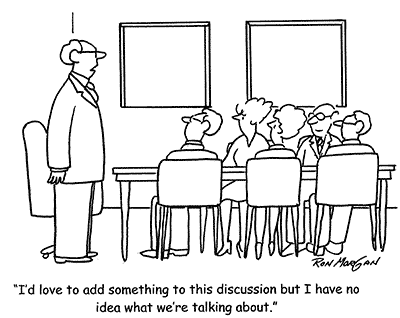
Don’t make patsies of your board members. When possible, take the time to contact each one about important upcoming decisions. This gives them an opportunity to ask questions and explore opinions before the meeting, and some time to reflect or do more investigation based on what they learn.
This improves each board member’s confidence when they arrive at the board meeting already “in the know”. They feel included, informed, and prepared to engage with authority, precisely because you have personally and individually invited them to do so.
2. Design the agenda for constructive dialog and results.
Some boards use basically the same agenda for every meeting. Often the agenda will feature lots of time for listening to reports. Sometimes, the board uses the agenda format they use because that’s just what they’ve always done. And some even come to believe that they HAVE to use a specific agenda format for their board meeting to officially count.
Unless your organization’s bylaws mandate the order of topics on the board meeting agenda (and I’ve never seen nor heard of such a thing), you don’t have to follow any particular order. There is no such rule. You are free to choose.
Because you are free to choose, you have an opportunity to choose wisely and well.
If it is the goal to maintain status quo and keep the board completely out of the organization’s business, by all means, design an agenda full of long boring reports. If anyone demands the addition of a topic on the agenda that you really don’t want to deal with, schedule it last and at least an hour after any breaks. That way, the board members will be worn down enough that they’ll be likely to gloss over that persnickety item.
And if this is your goal, shame on you!
If, instead, you are in a position to set the board agenda and wish to engage the collective wisdom of the board to make meaningful progress, do this.
Use a consent agenda.
Recently, we published a series of 4 board and committee meeting templates. 3 of these meeting designs make use of a consent agenda, which gives the board an expedient way to quickly complete the formal legal approvals and get on to more interesting topics. To create a consent agenda, you put all the items requiring formal approval and that you already know everyone agrees to in a list. During the meeting, you ask the board to approve all items on the consent agenda with a single motion.
Schedule big decisions and discussions first
“First” means as early as possible after the meeting begins, or directly following a snack or meal break.
You need to put big items first for two reason.
Reason One: sometimes the board doesn’t get through everything on the agenda. Putting an important item later creates a risk that it could get cut short or deferred altogether.
Reason Two: decision fatigue is a huge deal. As we make decisions throughout the day, our capacity to make more decisions wears out. Unfortunately, it doesn’t matter how big the early decisions are – the more of them we make, the less decision-making ability we have available. As we tire, we tend to make “safer”-and-easier-but-not-better decisions, which as we’ve discussed, is already a big problem at board meetings. Not buying it? Take a look at this study of how the timing of a parole appeal in a judge’s day – whether it was first or later – impacted the judge’s decision.
Scheduling important items first means the board tackles them when their decision-making abilities are at their best.
3. Breaks and Snacks
If you’ve been reading through, this one should now be obvious. Board work can be exciting, taxing, and tedious all at the same time. It’s exhausting.
Schedule breaks at least every 90 minutes. Plan for snacks and coffee, and if your meeting will last through lunch, don’t make it a working lunch. Let people just eat and chill for a bit. If you’ve ever spent any significant amount of time with a toddler, you know how very poorly they function when they get hungry or tired. It turns out that the same is true for adults – we just get a lot better at hiding it as we get older.
Admittedly, seeing the Very Important Board People go through the adult version of a toddler meltdown turned out to be a really useful experience for me. But I’m guessing the Scary Department of Defense guy would have been happier if he could have stuck to his diet, and I don’t envy the reaction of the snorer when the recording was sent out.
To help your board do their best work, plan how you will keep them hydrated, fed, and comfortable.
In Conclusion
Board meetings are special, but more importantly, they’re meetings. Everything we’ve learned and shared here on the Lucid blog and on Twitter about how to run an engaging and effective meeting applies. Adequate preparation, a well-designed meeting plan, and considerate facilitation matter in every meeting, and become even more important for boards given the high stakes and high-pressure nature of the work.
In that way, a board meeting isn’t that different than a big sales meeting, or an important client kickoff. The key to success is a shift of perspective; learning to worry less about the formalities and more about making it easy for everyone involved to participate effectively.
Do I still get nervous about board meetings? Sure, but usually only when I’m new to the board. Even then it’s the kind of nervous you feel anytime you need to go be Important in front of a group you’ve never met – and nowhere near as nerve-wracking as public speaking.
Really, though, once I figured out that board meetings are basically just meetings with a few extra rules, attended by a bunch of real people who may or may not be any more prepared than I am, that took a lot of the stress out of it.
If you’re looking to grow your confidence when planning and running board meetings, check out the resources below. They’ll give you a great starting point for all the mechanical stuff, and guidance for the unique requirements in your sector.
Then, keep remembering that every board member is a real person. Focus on helping them perform like the Important Person they want to be in your board meeting to get more enjoyable and stimulating meetings that yield truly useful results.
Templates and Resources
From the Lucid Template Gallery
- A Simple Board Meeting
- A Formal Board Meeting
- A Startup Board Meeting
- Robert’s Rules of Order Standard Order of Business
Download the Facilitator’s Guide
The Facilitator’s Guide for Running Board Meetings
This 19-page Facilitator’s PDF Guide includes:
- Guidance for managing board meetings in Lucid
- Step-by-Step Instructions
- Overview of 4 board meeting templates
- Resources: websites and books about effective board meetings
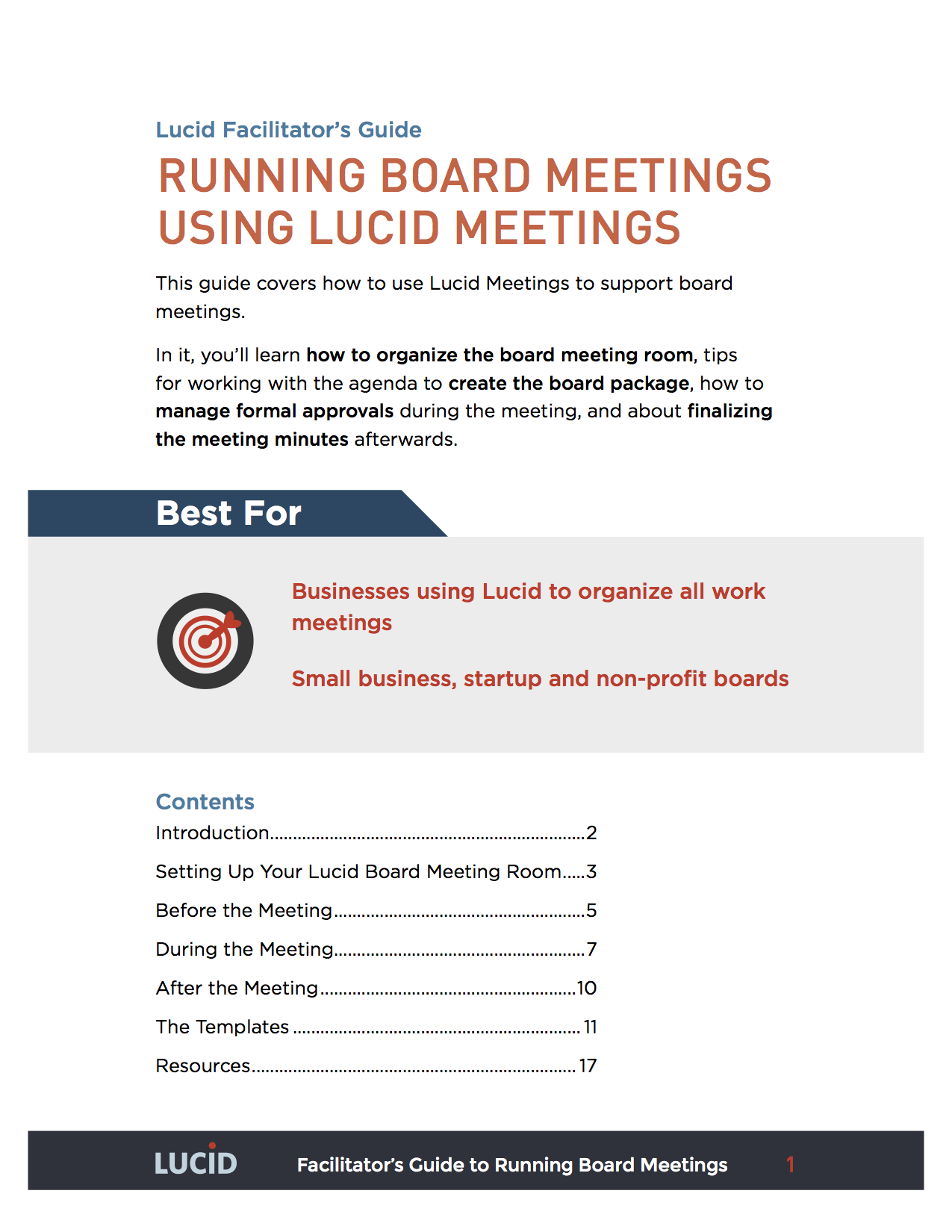
From the Lucid Blog
- How to Lead Introductions in Business Meetings
- 7 Meeting Checkpoints that Ensure Alignment
- The Power of Silence in Meetings
- Anatomy of the perfect meeting invitation email
Links from around the web
- Board Effect Resources: https://www.boardeffect.com/resources/
- BoardMax Blog: https://www.streamlinksoftware.com/boardmax/blog
- BoardSource Resources for Non-Profit Boards: https://www.boardsource.org/eweb/
- International Corporate Governance Network (ICGN): https://www.icgn.org/
- Robert’s Rules Online: https://www.rulesonline.com/
(Text from the 4th edition, so out of date but still handy for quick reference)
Books
All links go to Amazon.com.
- William G. Bowen, The Board Book: An Insider’s Guide for Directors and Trustees, W. W. Norton & Company (April 9, 2012)
- Patrick Dunne, Running Board Meetings: How to Get the Most from Them, Kogan Page (May 1, 2007)
- Brad Feld and Mahendra Ramsinghani, Startup Boards: Getting the Most Out of Your Board of Directors, Wiley (December 31, 2013)
- Henry M. III Robert, Robert’s Rules of Order Newly Revised, 11th edition, Da Capo Press (September 27, 2011)
All images found on cartoonstock.com



